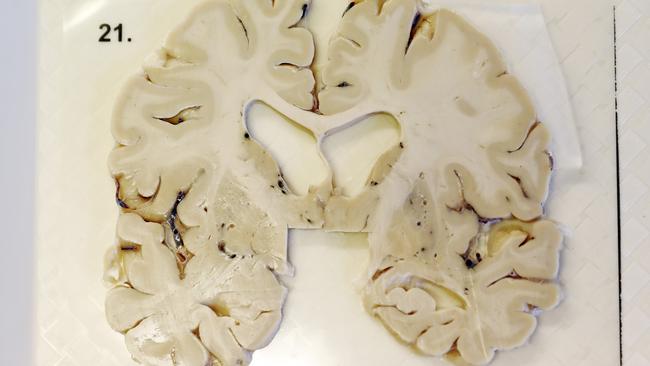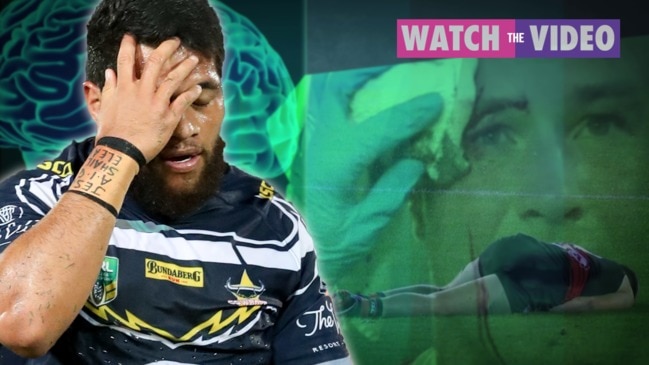Footballers with CTE experience disabling sense of dysfunction
Well before their families have any inkling there is anything wrong, retired footballers suffering CTE experience a disabling sense of dysfunction.

Well before their families have any inkling there is anything wrong, retired footballers suffering the degenerative brain disease chronic traumatic encephalitis, or CTE, experience a disabling sense of dysfunction.
“They just say there’s something wrong with my brain, I can’t process properly,” says neurophysiologist Alan Pearce, research manager at the Australian Sports Brain Bank. “They often have behavioural issues – aggression, anxiety, irritability. But it’s not a mental health issue.”
CTE is a neurodegenerative disease triggered by repetitive impact to the head, such as in tackles or collisions.
There is a common perception it’s related primarily to concussion, but in fact it’s repeated impact to the brain that is the predominant cause – and the more blows over time, the higher the risk.
CTE sufferers have been observed to make impulsive decisions that are out of character. The link between CTE and suicide has also been observed in a number of cases in individuals who did not exhibit depression or suicidality.
The Australian Sports Brain Bank published a scientific paper earlier this year based on analysis of 21 CTE brains.

“Suicidality was something that was quite prevalent in the younger population of the brains,” Professor Pearce said. “Obviously, we don’t want to be alarmist but it’s certainly an area that we need to research a lot more.”
The symptoms of CTE may begin around eight to 10 years after suffering repetitive knocks to the head.
The earliest symptoms are behavioural and may include a sense of confusion or brain fog, dizziness and headaches.
As the disease progresses, memory is affected and a person may exhibit poor impulse control and judgment.
In the later stages of the disease there is significant cognitive impairment, “almost dementia-like symptoms”.
There is a close connection between CTE and Alzheimer’s and Parkinson’s, and sufferers may end up being diagnosed with these conditions too.
A key reason for the interconnection between these other neurodegenerative diseases and CTE is that all of the conditions are thought to relate to leakage of the tau protein into the brain. Blows to the head are thought to cause tau to be released from the neurons into the brain where it becomes toxic.
“In terms of its progression it’s quite similar to Alzheimer's in the fact that it’s due to the release and increased metabolism of this protein called tau,” Professor Pearce says.
“This protein maintains the structural integrity of the neurons and is quite good for the brain if it’s inside the brain cells or the neurons, but when it’s released it becomes toxic.”
There has been a set of diagnostic criteria recently developed for CTE but it is not yet used in clinical practice. Imaging is not yet sophisticated enough to be useful, and so diagnoses are made on the basis of symptoms and history of repetitive head trauma.
Post-mortem, those with CTE are found to have a reduction in brain weight and atrophy of several parts of the brain. There is also often scarring of the brain tissue.






To join the conversation, please log in. Don't have an account? Register
Join the conversation, you are commenting as Logout